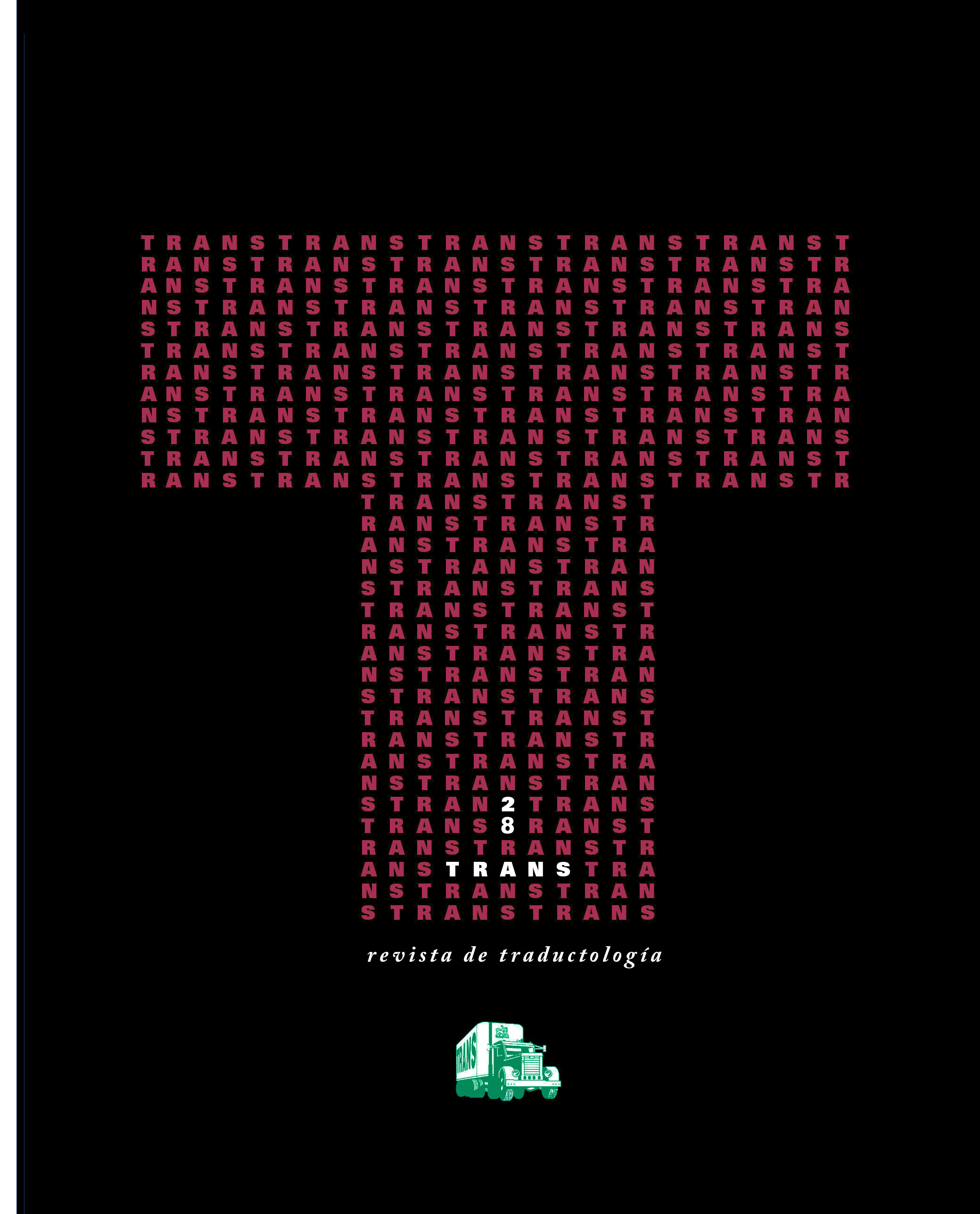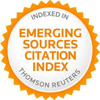Practice report as a graduation thesis for intepreting students: a descriptive survey
A Descriptive Survey
DOI:
https://doi.org/10.24310/trt.28.2024.18980Palabras clave:
normas de redacción, practice report, survey, interpreting practice features, writing norms, problems and strategiesResumen
Practice reports where students reflect on and learn from interpreting experiences are the most widely chosen form of graduation thesis among Master of Interpreting students in China. Though seemingly less demanding than traditional thesis, it poses different challenges for students. So far, limited research has been conducted to explore this unique form of graduation requirement. This survey aims to describe the features of Master of Interpreting (MI) students’ practice reports. A purposive sample of 685 interpreting practice reports (2015-2021) were analyzed through content analysis against a literature-informed coding scheme. The results reveal the diversified features of MI graduates’ interpreting practice and point to the lack of agreed norms on report writing. This survey informs trainers and students of the most common problems, strategies, and theoretical frameworks in problem analysis and strategy justification. Hopefully, the findings can provide pedagogical insights for trainers and students in institutions where a similar thesis form is practiced.
Descargas
Métricas
Citas
Arumí Ribas, M. (2012). Problems and strategies in consecutive interpreting: A pilot study at two different stages of interpreter training. Meta, 57(3), 812-835. https://doi.org/10.7202/1017092ar
Cho, J. Y., & Lee, E. (2014). Reducing confusion about grounded theory and qualitative content analysis: Similarities and differences. The Qualitative Report, 19(32), 1-20. https://doi.org/10.46743/2160-3715/2014.1028
Defrancq, B., Delputte, S., & Baudewijn, T. (2022). Interprofessional training for student conference interpreters and students of political science through joint mock conferences: An assessment. The Interpreter and Translator Trainer, 16(1), 39-57. https://doi.org/10.1080/1750399x.2021.1919975
Dong, Y., Li, Y., & Zhao, N. (2019). Acquisition of interpreting strategies by student interpreters. The Interpreter and Translator Trainer, 13(4), 408-425. https://doi.org/10.1080/1750399X.2019.1617653
Etikan, I., Musa, S. A., & Alkassim, R. S. (2016). Comparison of convenience sampling and purposive sampling. American Journal of Theoretical and Applied Statistics, 5(1), 1-4. https://doi.org/10.11648/j.ajtas.20160501.11
Gile, D. (2009). Basic concepts and models for interpreter and translator training (Revised ed). John Benjamins. https://doi.org/10.1075/btl.8
Guo, S. (2019). A survey of the status quo of MTI degree theses in universities in Shaanxi Province [陕西省高校MTI专业学位毕业论文现状调研]. Innovative Research on Foreign Language Education and Translation Development [外语教育与翻译发展创新研究], 8, 182-187.
Han, Z., & Hou, X. (2022). Theoretical frameworks in translation practice reports of MTI students [MTI翻译实践报告写作中的理论框架问题]. Technology-assisted Foreign Languages Education [外语电化教学], 5, 25-30.
Hennink, M. & Kaiser, B. (2022). Sample sizes for saturation in qualitative research: A systematic review of empirical tests. Social Science & Medicine, 292(6), 1-10. https://doi.org/10.1016/j.socscimed.2021.114523.
Hsieh, H., & Shannon, S. (2005). Three approaches to qualitative content analysis. Qualitative Health Research, 15(9), 1277-1288. https://doi.org/10.1177/1049732305276687
Kader, S., & Seubert, S. (2015). Anticipation, segmentation…stalling? How to teach interpreting strategies. In D. Andres & M. Behr (Eds.), To know how to suggest…: Approaches to teaching conference interpreting (pp. 125-144). Frank & Timme.
Krippendorff, K. (2004). Content analysis: An introduction to its methodology. Sage. https://doi.org/10.1177/1094428108324513
Lai, L. & To, W. (2015). Social media content analysis: A grounded approach. Journal of Electronic Commerce Research, 16(2), 138-152. http://www.jecr.org/sites/default/files/16_2_p05.pdf
Leal, A. (2014). Truth in translation: Interpreters’ subjectivity in the truth and reconciliation hearings in South Africa. In K. Kaindl & K. Spitzl (Eds.), Transfiction: Research into the realities of translation fiction (pp. 233-246). John Bejamins. https://doi.org/10.1075/btl.110.16lea
Lederer, M. (2015). Interpretive theory. In F. Pöchhacker (Ed.), Routledge encyclopedia of interpreting studies (pp. 206-208). Routledge.
Lei, B. (2014). Situation of MTI interpreting dissertation writing: A survey in 10 universities in China [master’s thesis]. Guangdong University of Foreign Studies.
Li, X. (2013). Are interpreting strategies teachable? Correlating trainees’ strategy use with trainers’ training in the consecutive interpreting classroom. The Interpreters Newsletter, 18(9), 105-128. http://hdl.handle.net/10077/9754
Li, X. (2015a). Mock conference as a situated learning activity in interpreter training: A case study of its design and effect as perceived by trainee interpreters. The Interpreter and Translator Trainer, 9(3), 323-341. https://doi.org/10.1080/1750399x.2015.1100399
Li, X. (2015b). Putting interpreting strategies in their place: Justifications for teaching strategies in interpreter training. Babel, 61(2), 170-192. https://doi.org/10.1075/babel.61.2.02li
Li, X. (2024). Towards a set of theoretical frameworks to scaffold students’ reflections in interpreter training [Manuscript submitted for publication]. School of Translation Studies, Xi’an International Studies University.
Lian, J. K. M., Foo, Z. Y., & Ling, F. Y. Y. (2018). Value of internships for professional careers in the built environment sector in Singapore. Engineering, Construction and Architectural Management, 25(1), 77-89. https://doi.org/10.1108/ECAM-09-2015-0133
Lune, H., & Berg, B., L. (2017). Qualitative research methods for the social sciences (9th ed.). Pearson.
Mayring, P. (2014). Qualitative content analysis: Theoretical foundation, basic procedures and software solution. Klagenfurt.
Monique H. M., & Kaiser, B. N. (2022). Sample sizes for saturation in qualitative research: A systematic review of empirical tests. Social Science & Medicine, 292(C), 1-10. https://doi.org/10.1016/j.socscimed.2021.114523
Mu, L. (2011). Exploring the modes of MTI degree thesis [翻译硕士专业学位论文模式探讨]. Foreign Language Learning Theory and Practice [外语教学理论与实践], 1, 77-82.
Mu, L., & Li, W. (2019). Rethinking the writing norms of MTI graduation theses: An analysis based on 704 graduation theses [翻译硕士专业学位论文写作模式的再思考:基于704篇学位论文的分析]. Academic Degrees & Graduates Education [学位与研究生教育], 11, 33-39.
Mu, L., & Zou, B. (2011). A survey of MTI graduation theses and writing [翻译硕士专业学位毕业论文调研与写作探索]. Chinese Translators Journal [中国翻译], 5, 40-45.
Mu, L., Zou, B., & Yang, D. (2012). Exploring the writing norms of MTI graduation theses [翻译硕士专业学位论文参考模板探讨]. Academic Degrees & Graduates Education [学位与研究生教育], 3, 24-30.
Nord, C. (2018). Translating as a purposeful activity: Functionalist approaches explained (2nd ed.). Routledge. https://doi.org/10.4324/9781351189354
Pöchhacker, F. (1995). Simultaneous interpreting: A functionalist perspective. Hermes: Journal of Language and Communication Studies, 14, 31-53. https://doi.org/10.7146/hjlcb.v8i14.25094
Pöchhacker, F. (2016). Introducing interpreting studies (2nd ed.). Routledge. https://doi.org/10.4324/9781315649573
Pöllabauer, S. (2015). Role. In F. Pöchhacker (Ed.), Routledge encyclopedia of interpreting studies (pp. 355-359). Routledge. https://doi.org/10.4324/9781315678467
Prescott, P., Gjerde, K. P., & Rice, J. L. (2021). Analyzing mandatory college internships: Academic effects and implications for curricular design. Studies in Higher Education, 46(11), 2444-2459. https://doi.org/10.1080/03075079.2020.1723531
Rai, N., & Thapa, B. (2015). A study on purposive sampling method in research. https://www.researchgate.net/profile/Parthiban_Govindasamy/post/
Riccardi, A. (2005). On the evolution of interpreting strategies in simultaneous interpreting. Meta, 50(2), 754-767. https://doi.org/10.7202/011016ar
Ritchie, J., & Lewis, J. (2003). Qualitative research practice: A guide for social science students and researchers. Sage.
Schreier, M. (2012). Qualitative content analysis in practice. Sage.
Setton, R., & Dawrant, A. (2016). Conference interpreting: A complete course. John Benjamins. https://doi.org/10.1075/btl.120
Shei, C. C. (2005). Translation commentary: A happy medium between translation curriculum and EAP. System, 33(2), 309-325. https://doi.org/10.1016/j.system.2005.01.004
Shih, C. Y. (2018). Translation commentary re-examined in the eyes of translator educators at British universities. The Journal of Specialised Translation, 30, 291-311. https://discovery.ucl.ac.uk/id/eprint/10055523
Sun, S., & Ren, W. (2019). Exploring the modes of MTI degree thesis [翻译硕士学位论文模式探究]. Chinese Translators Journal [中国翻译], 4, 33-39.
Vargas Urpi, M. (2016). Problems and strategies in public service interpreting as perceived by a sample of Chinese-Catalan/Spanish interpreters. Perspectives, 24(4), 666-678. https://doi.org/10.1080/0907676X.2015.1069861
Wang, F. (2020). A survey on the status of MTI dissertation writing and its implications for teaching: A case study of a university in southwest China [翻译硕士(MTI)论文写作状况调查及对教学的启示: 以西南某高校为例]. English Square [英语广场], 118, 50-55.
Xu, M., Zhao, T., & Zong, W. (2020). On translator training in industry-specific universities in China: A case study of 16 MTI programs. Lebende Sprachen, 65(1), 1-19. https://doi.org/10.1515/les-2020-0001
Xu, Z. (2015). Doctoral dissertations in Chinese interpreting studies: A scientometric survey using topic modeling. Forum, 13(1), 115-117. https://doi.org/10.7287/peerj.preprints.1277v1
Xu, Z. (2015). The past, present and future of Chinese MA theses in interpreting studies: A scientometric survey. Perspectives: Studies in Translatology, 23(2), 284-304. https://doi.org/10.1080/0907676X.2015.1011175
Xu, Z., & Pekelis, L. (2015). Chinese interpreting studies: A data-driven analysis of a dynamic field of enquiry. PeerJ, 3, e1249. https://doi.org/10.7717/peerj.1249
Yang, Y., & Li, X. (2022). Which theories are taught to students and how they are taught: A content analysis of interpreting textbooks. Círculo de Lingüística Aplicada a la Comunicación, 92, 167-185. https://dx.doi.org/10.5209/clac.78327
Zhang, L. (2020). A survey report of MI theses in three foreign studies universities in China (2009-2019) [master’s thesis]. Guangdong University of Foreign Studies.
Publicado
Cómo citar
Número
Sección
Licencia
Derechos de autor 2024 Jiachen Wen, Xiangdong Li

Esta obra está bajo una licencia internacional Creative Commons Atribución-NoComercial-CompartirIgual 4.0.
Todos los contenidos publicados en TRANS. Revista de Traductología están sujetos a la licencia Creative Commons Reconocimento-NoComercia-Compartirigual 4.0 cuyo texto completo puede consultar en <http://creativecommons.org/licenses/by-nc-sa/4.0>
Se pueden copiar, usar, difundir, transmitir y exponer públicamente, siempre que:
- Se cite la autoría y la fuente original de su publicación (revista, editorial y URL de la obra).
- No se usen para fines comerciales.
- Se mencione la existencia y especificaciones de esta licencia de uso.
- Compartir Igual — Si remezcla, transforma o construye sobre el material, debe distribuir sus contribuciones bajo la misma licencia que el original.
Los derechos de autor son de dos clases: morales y patrimoniales. Los derechos morales son prerrogativas perpetuas, irrenunciables, intransferibles, inalienables, inembargables e imprescriptibles. De acuerdo con la legislación de derechos de autor, TRANS. Revista de Traductología reconoce y respeta el derecho moral de los autores/as, así como la titularidad del derecho patrimonial, el cual será cedido a la Universidad de Málaga para su difusión en acceso abierto. Los derechos patrimoniales, se refieren a los beneficios que se obtienen por el uso o divulgación de las obras. TRANS. Revista de Traductología se publica en open access y queda autorizada en exclusiva para realizar u autorizar por cualquier medio el uso, distribución, divulgación, reproducción, adaptación, traducción o transformación de la obra.
Es responsabilidad de los autores/as obtener los permisos necesarios de las imágenes que están sujetas a derechos de autor.












21.png)
